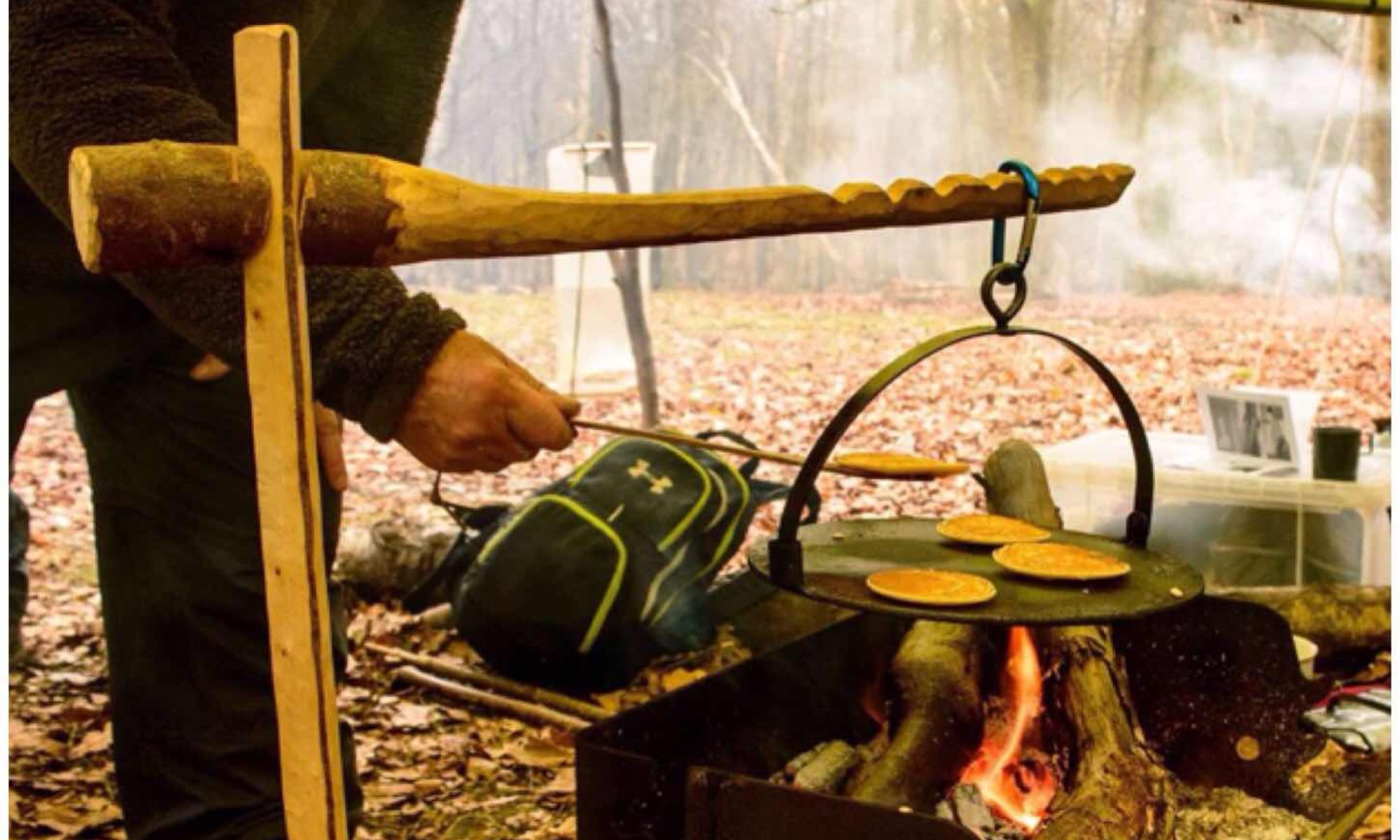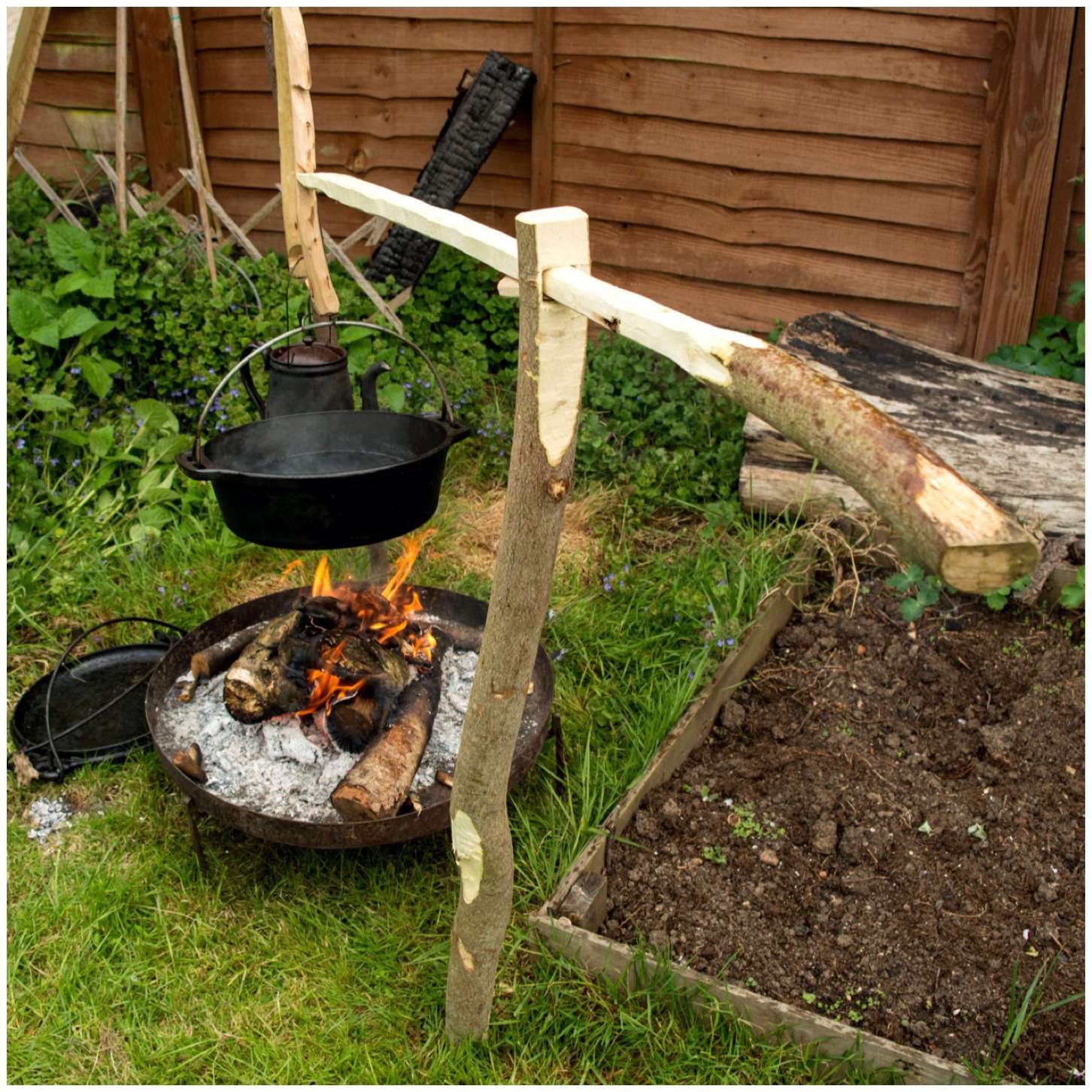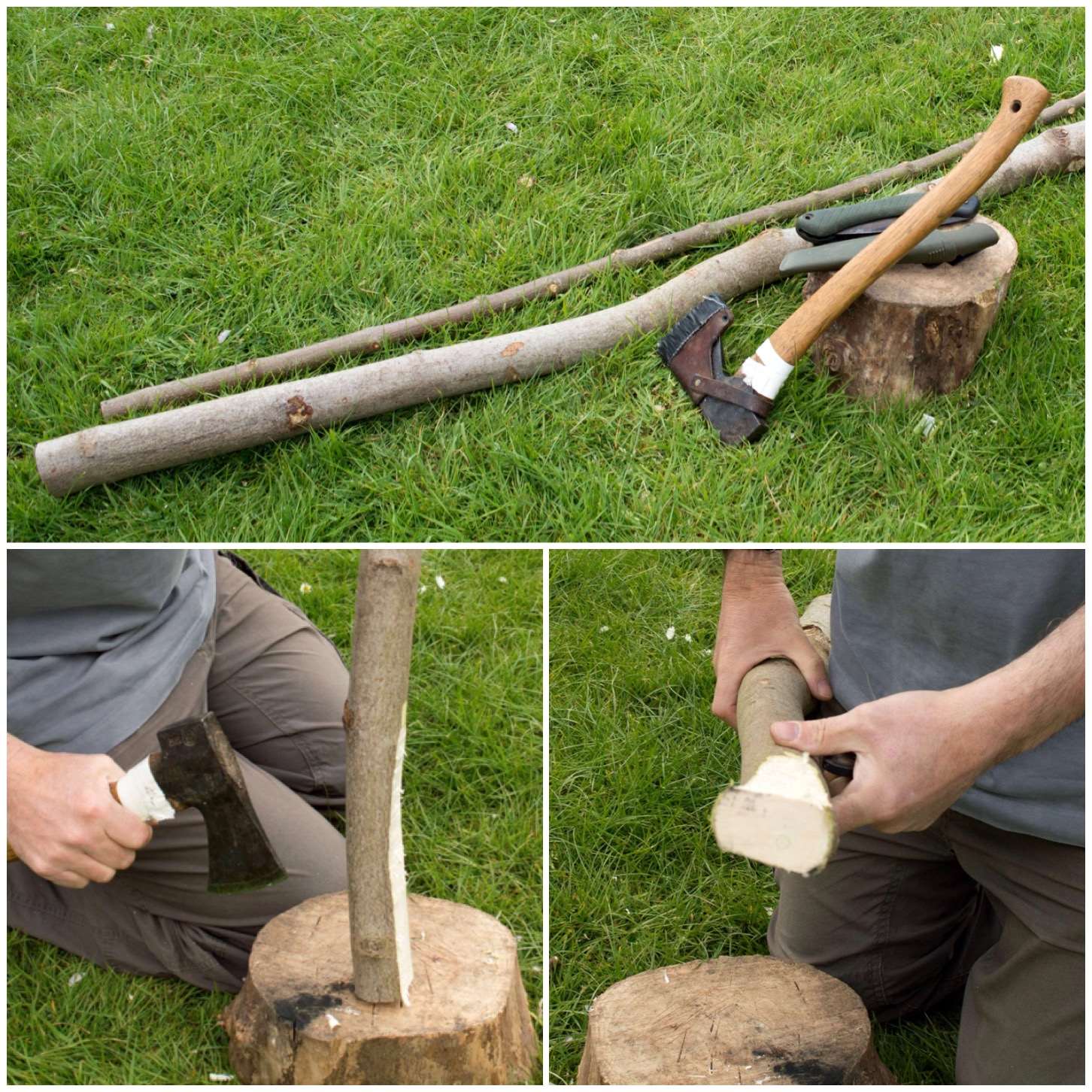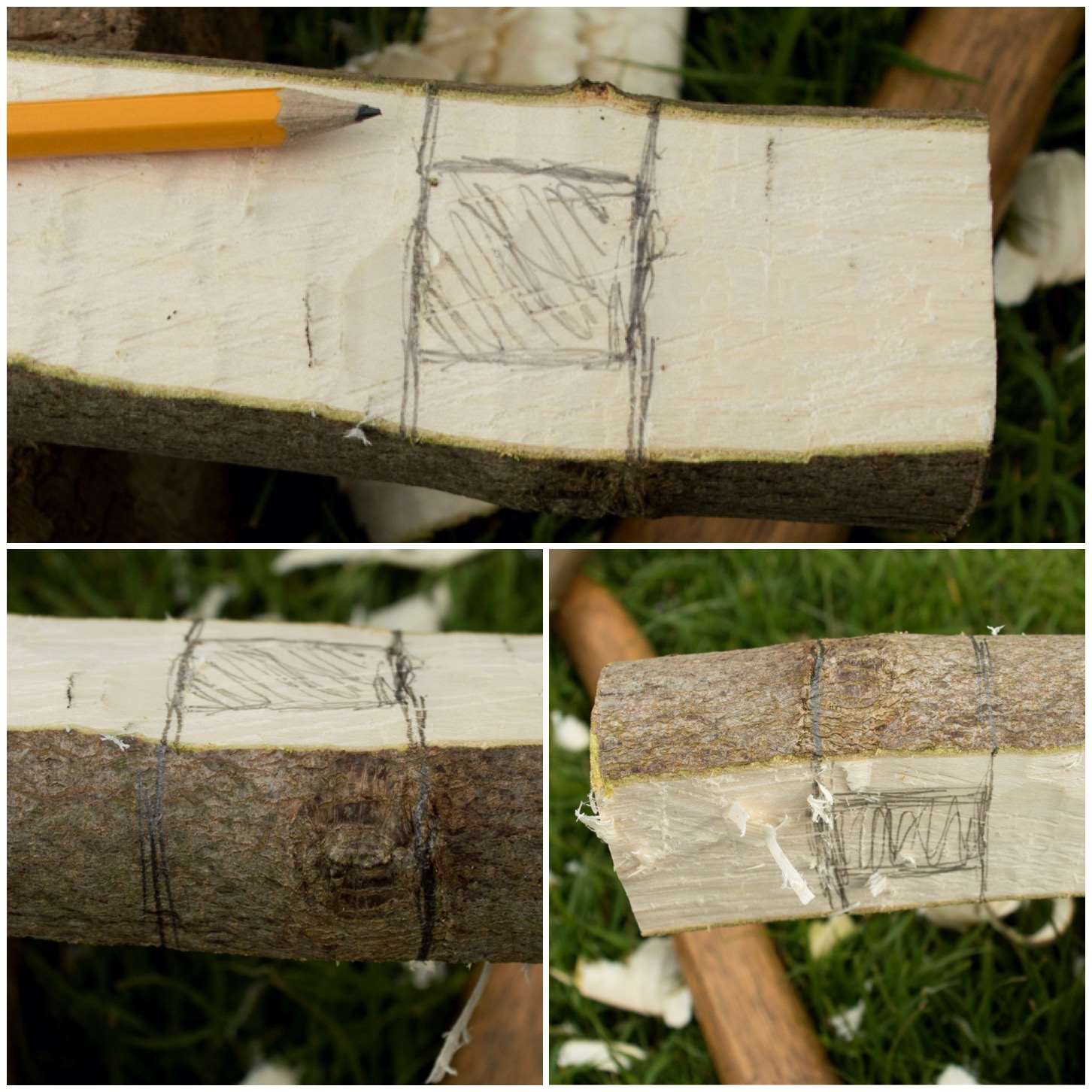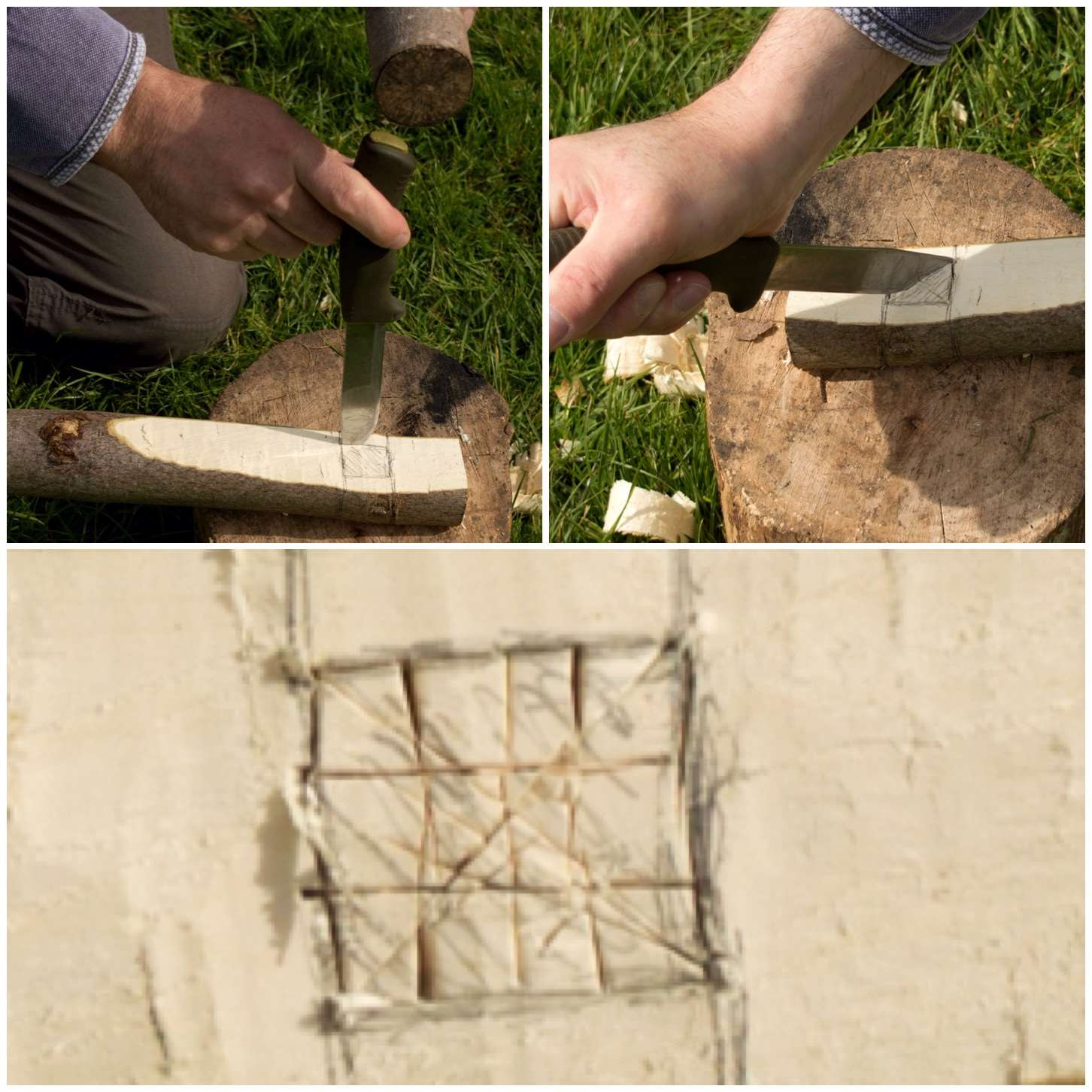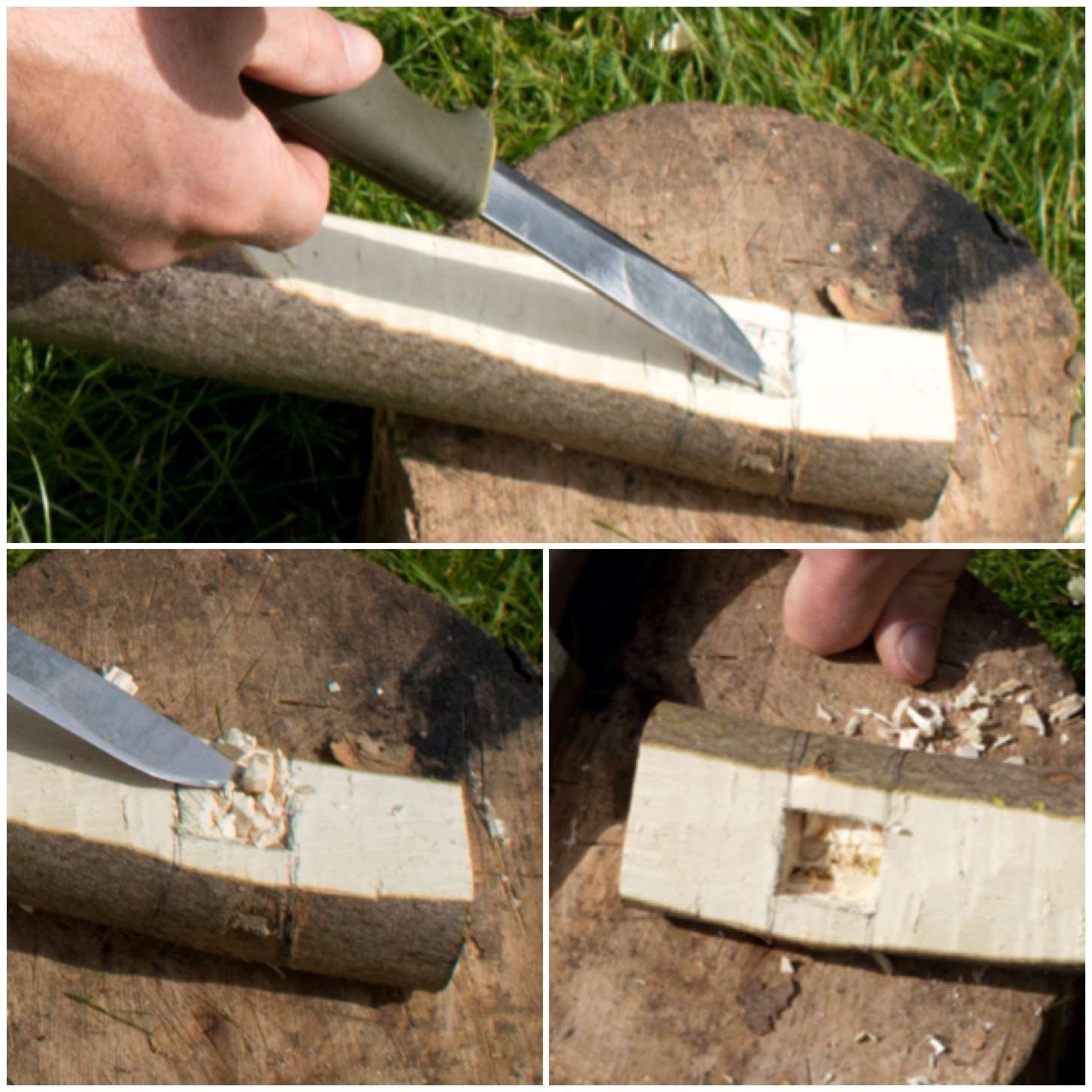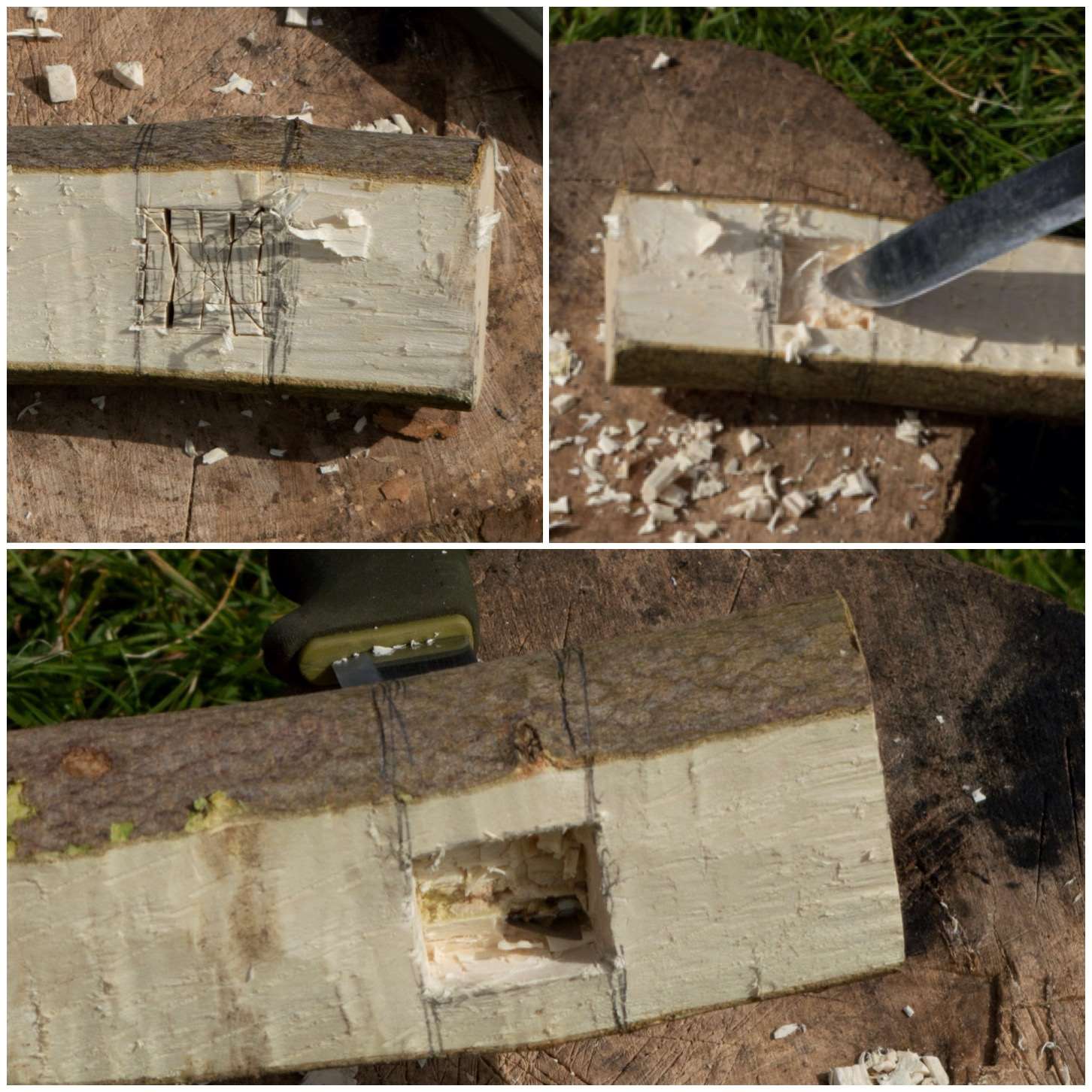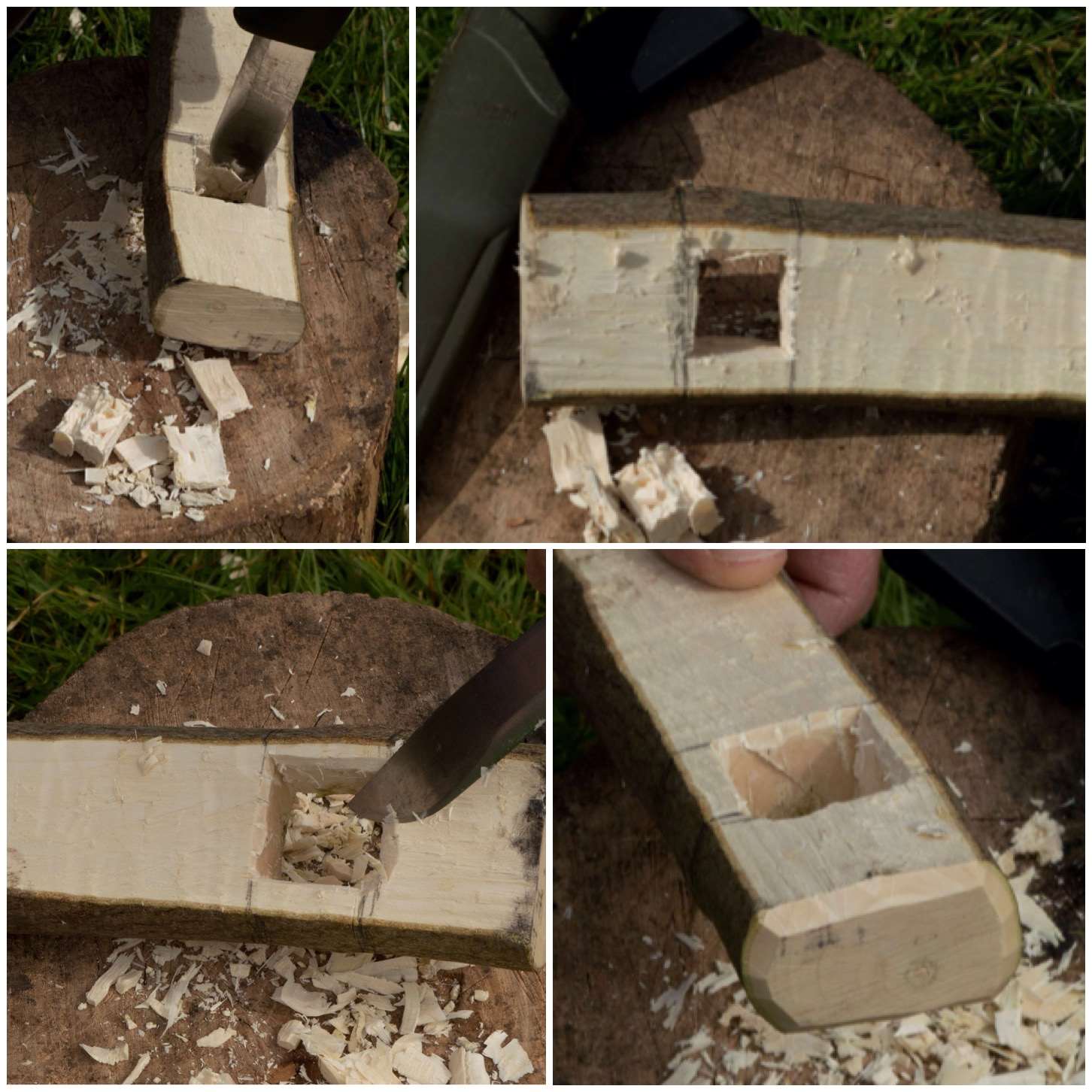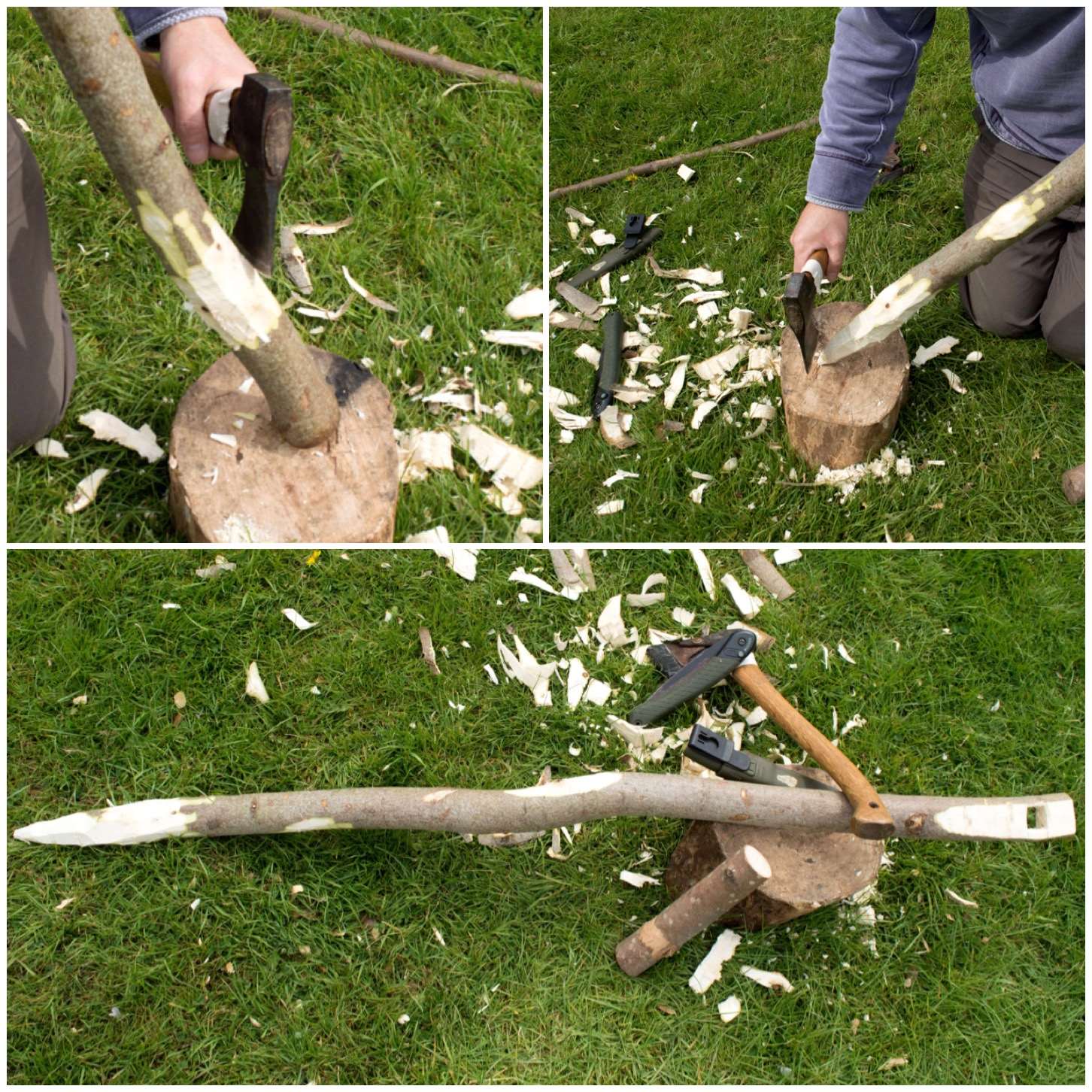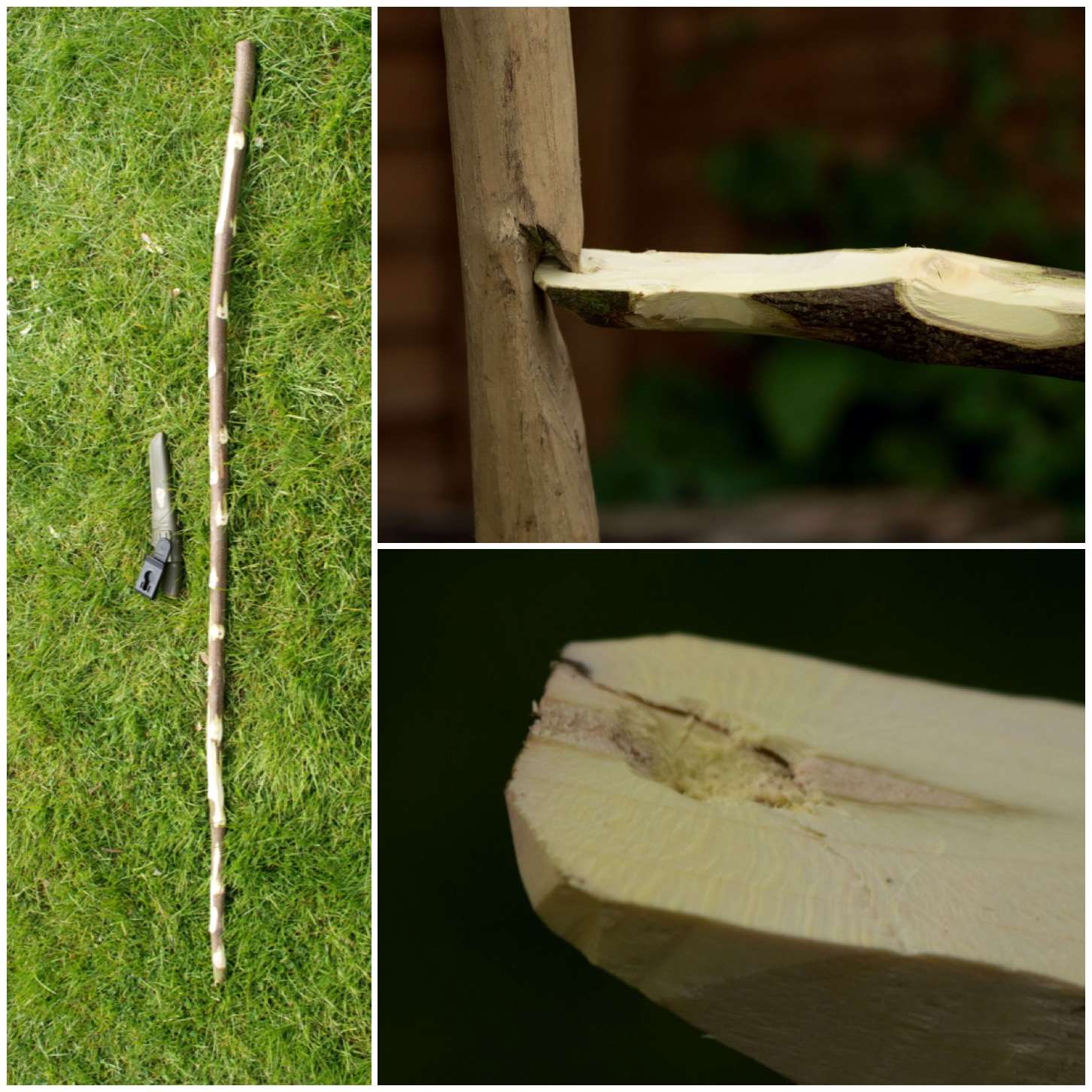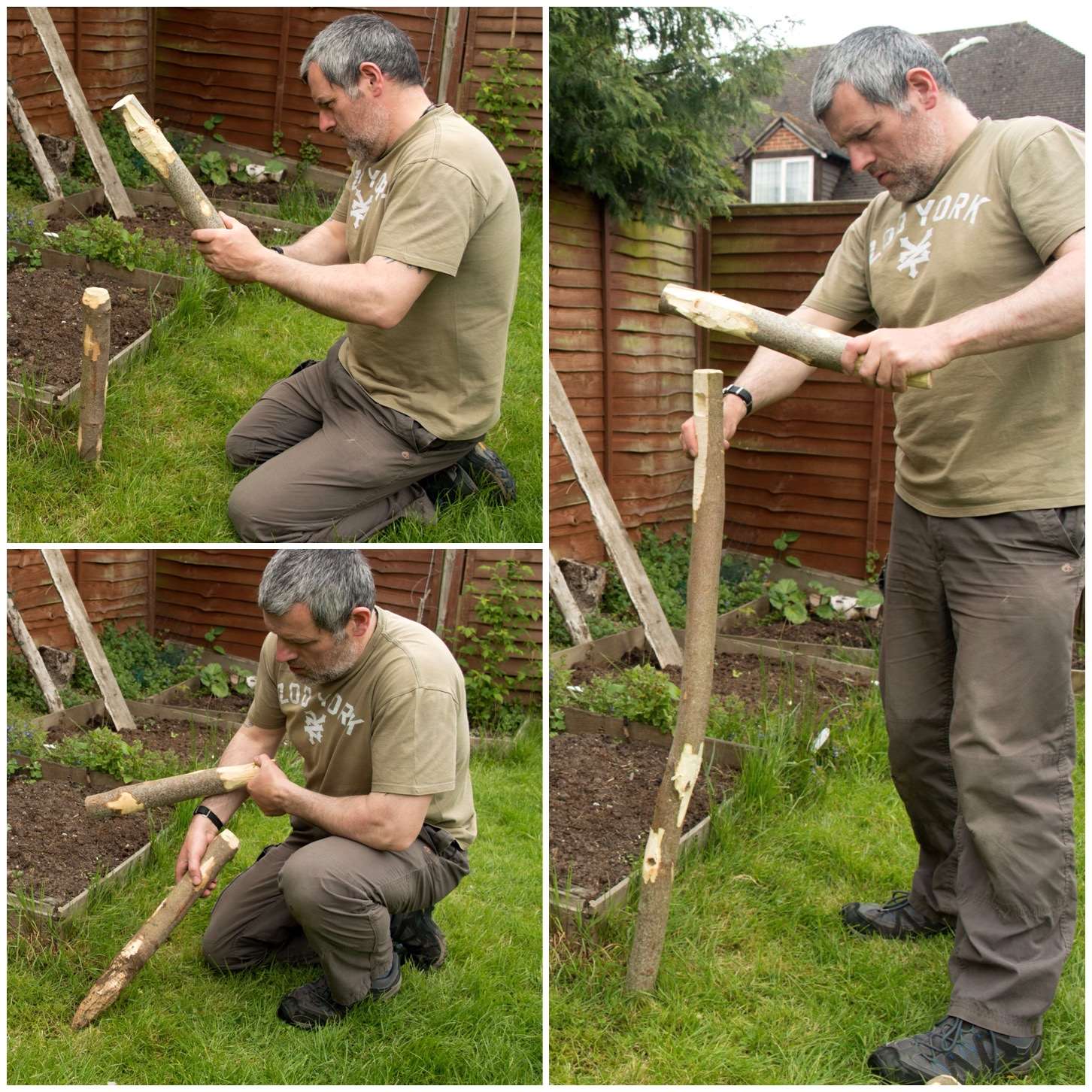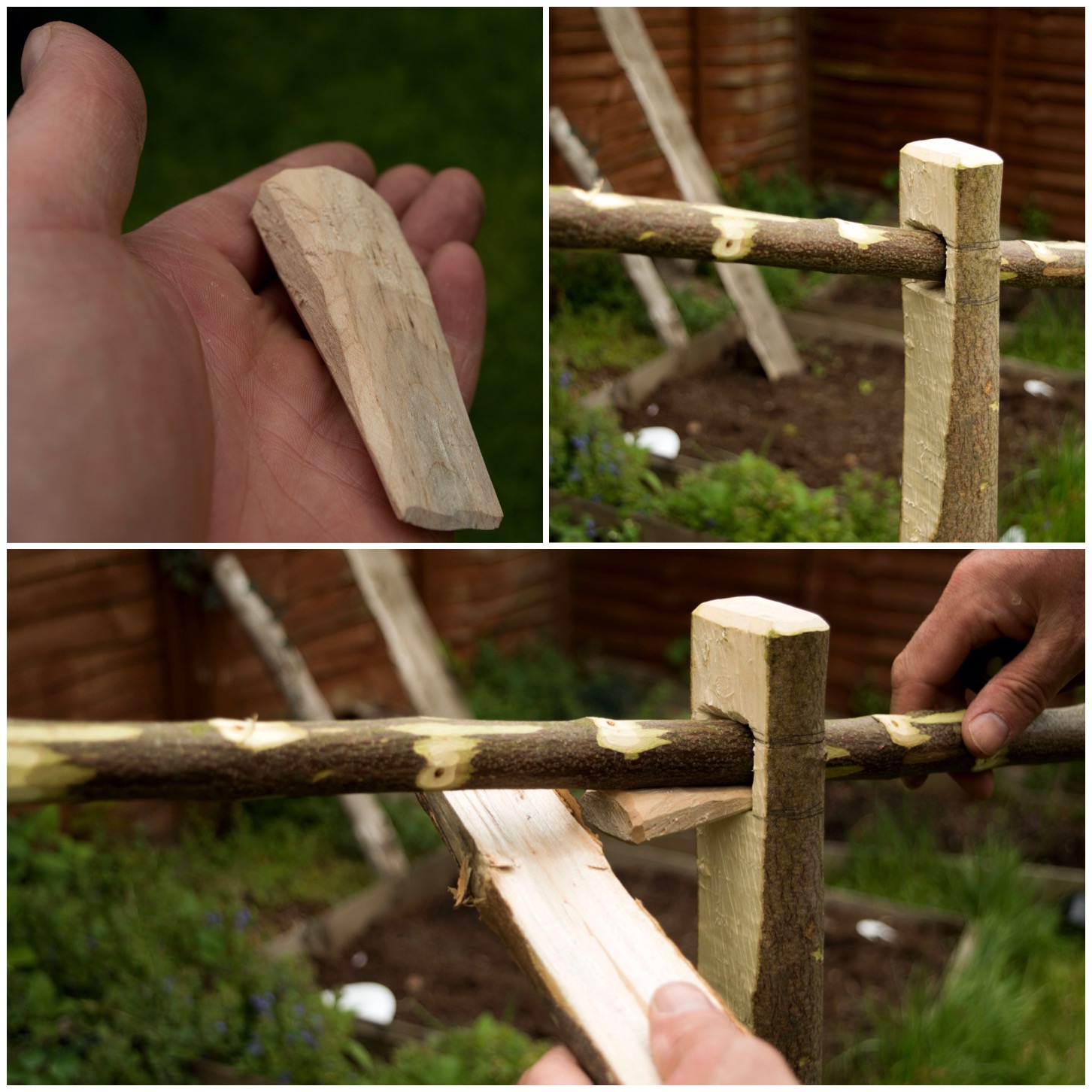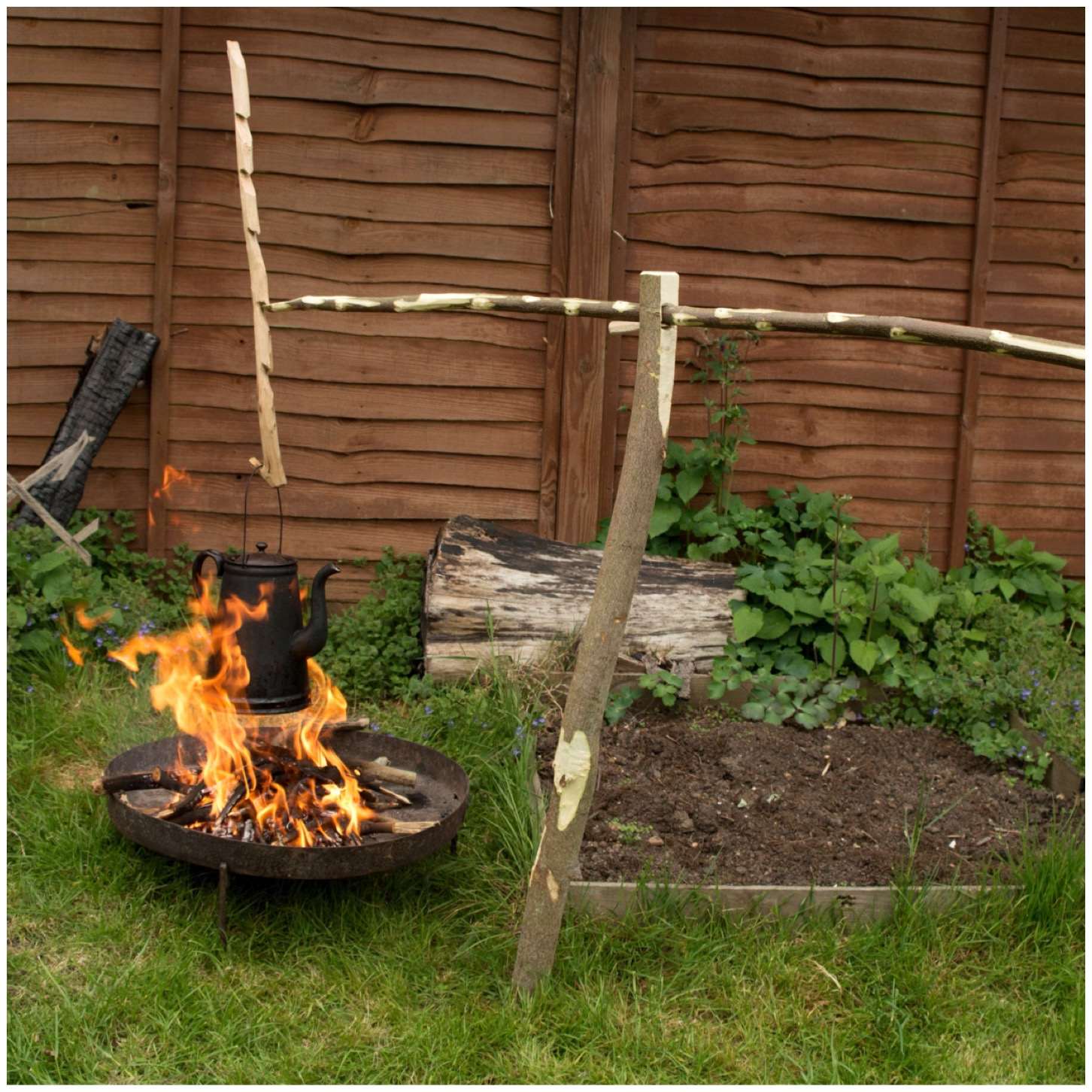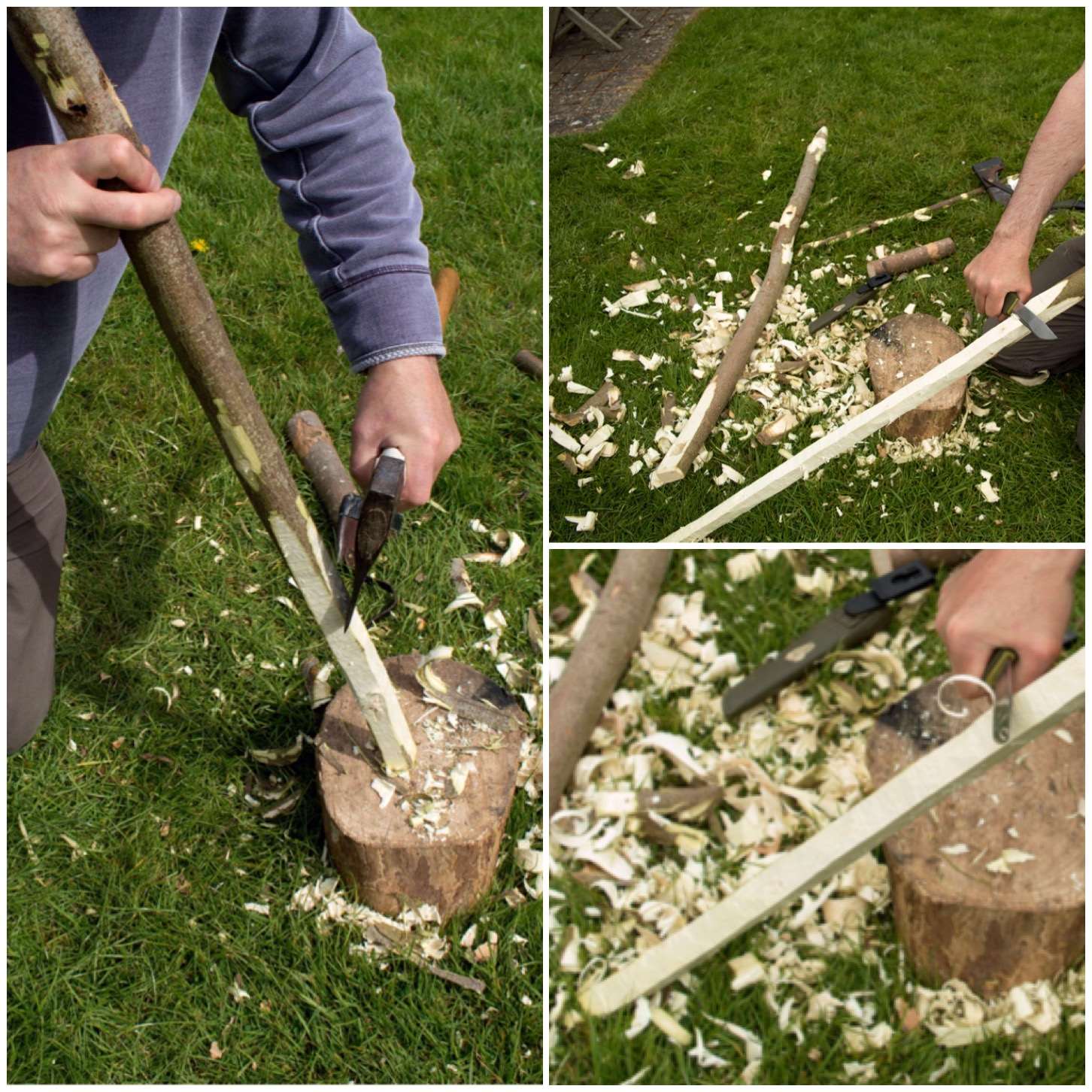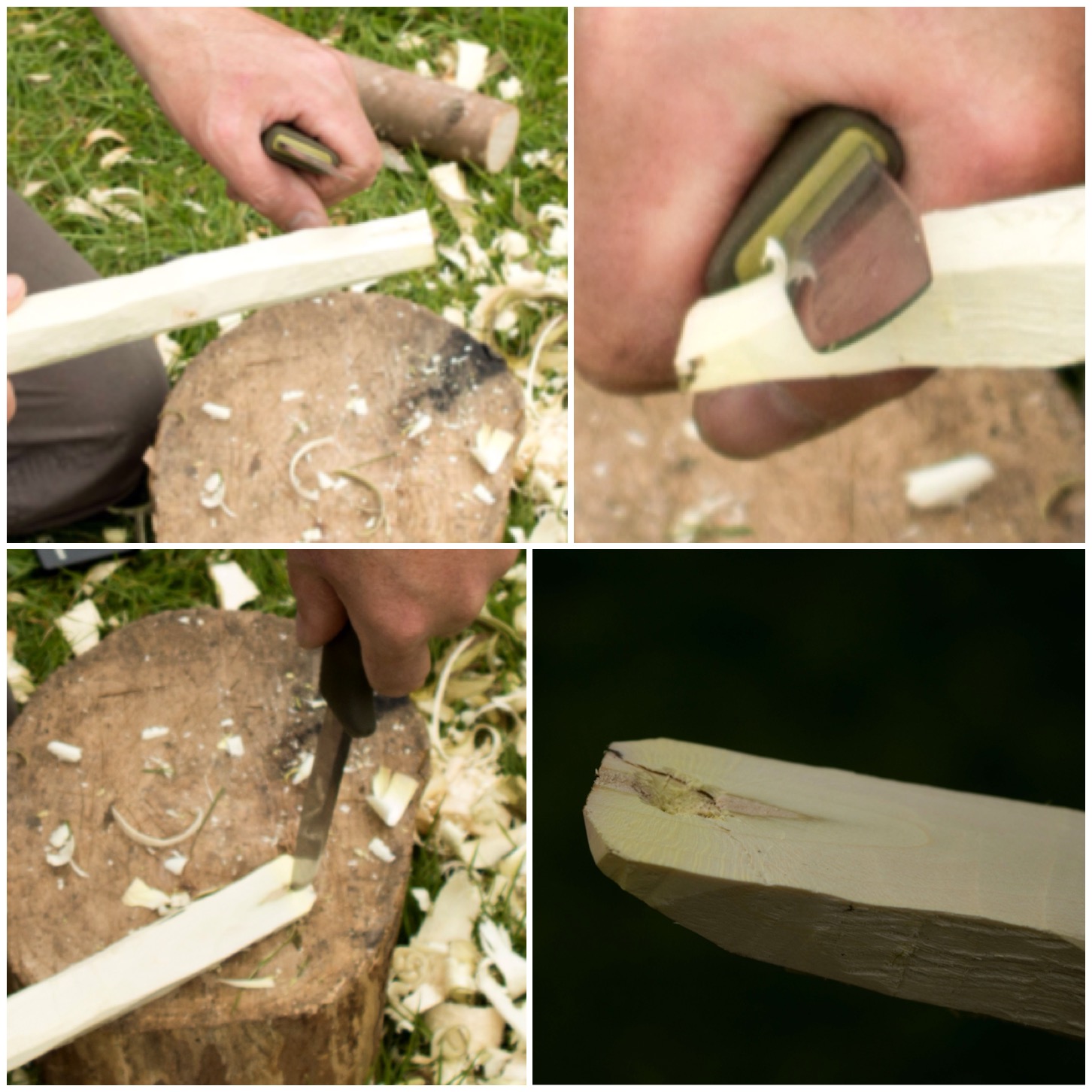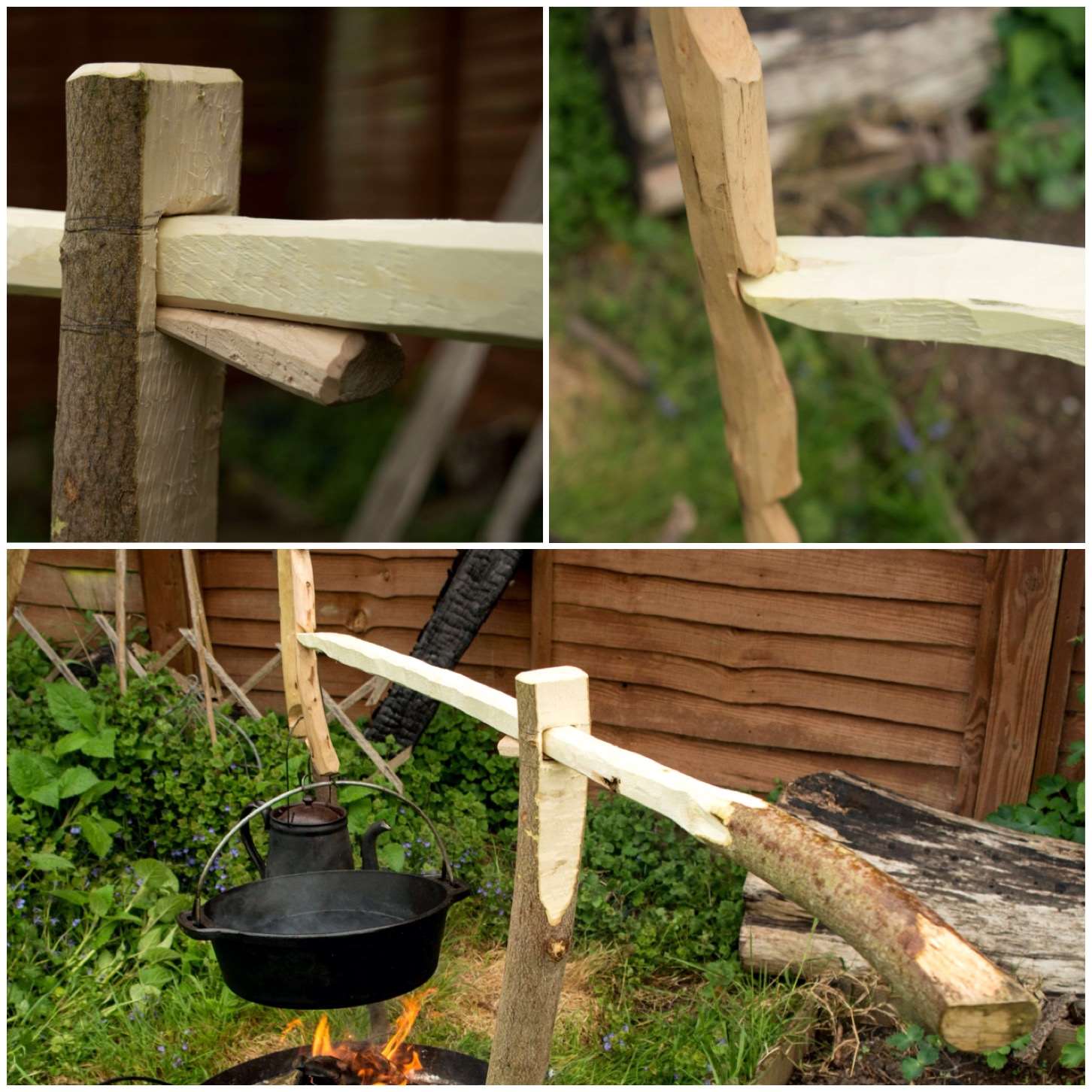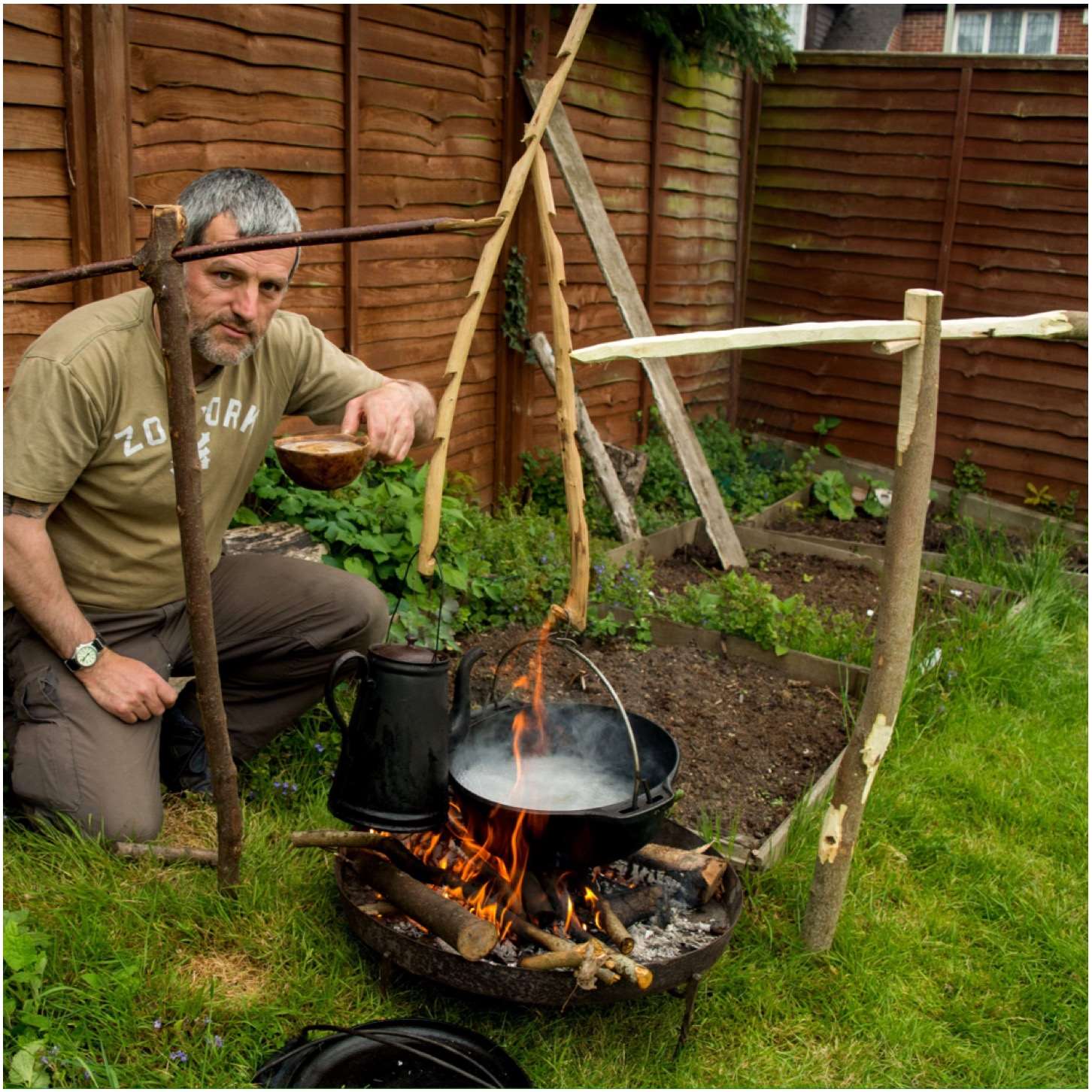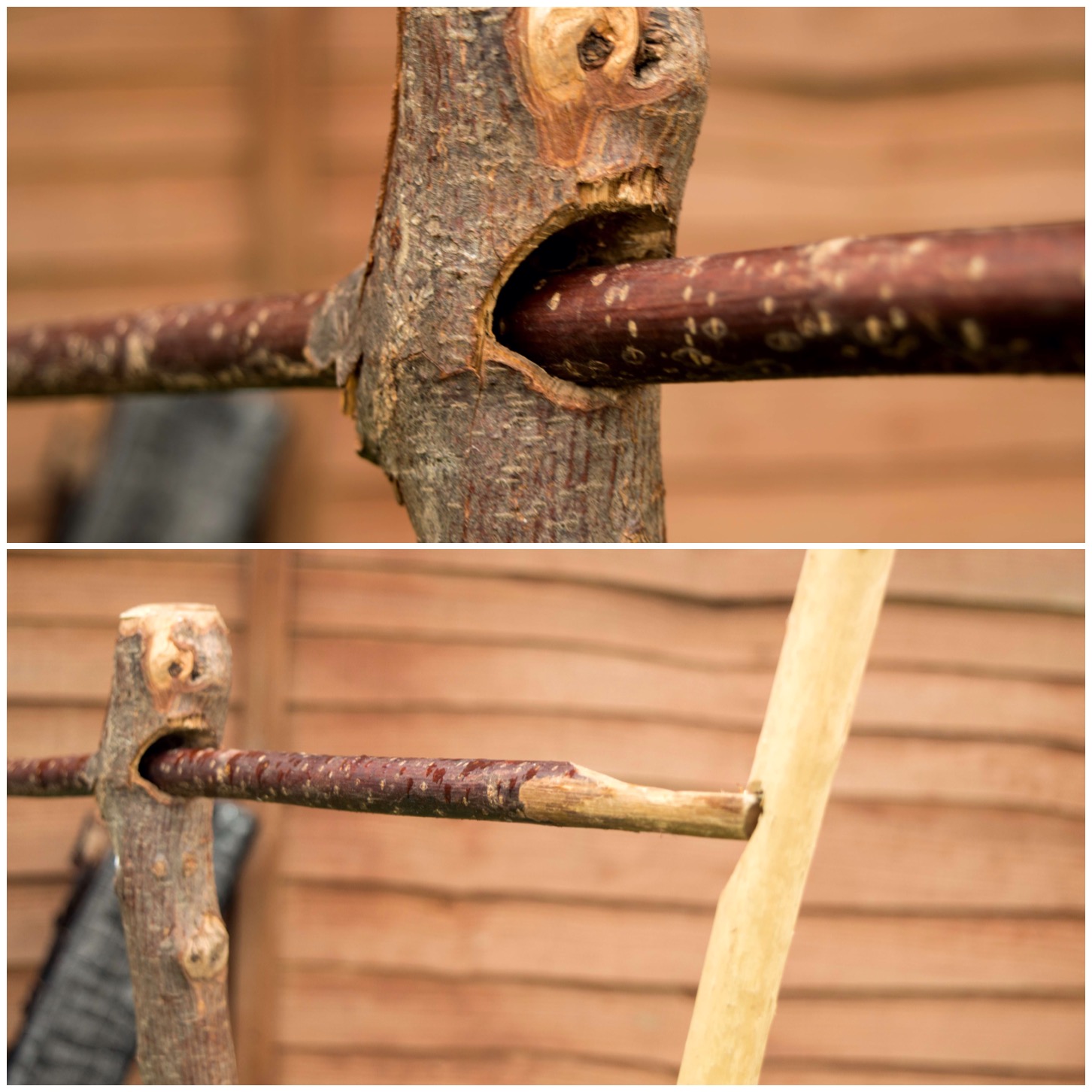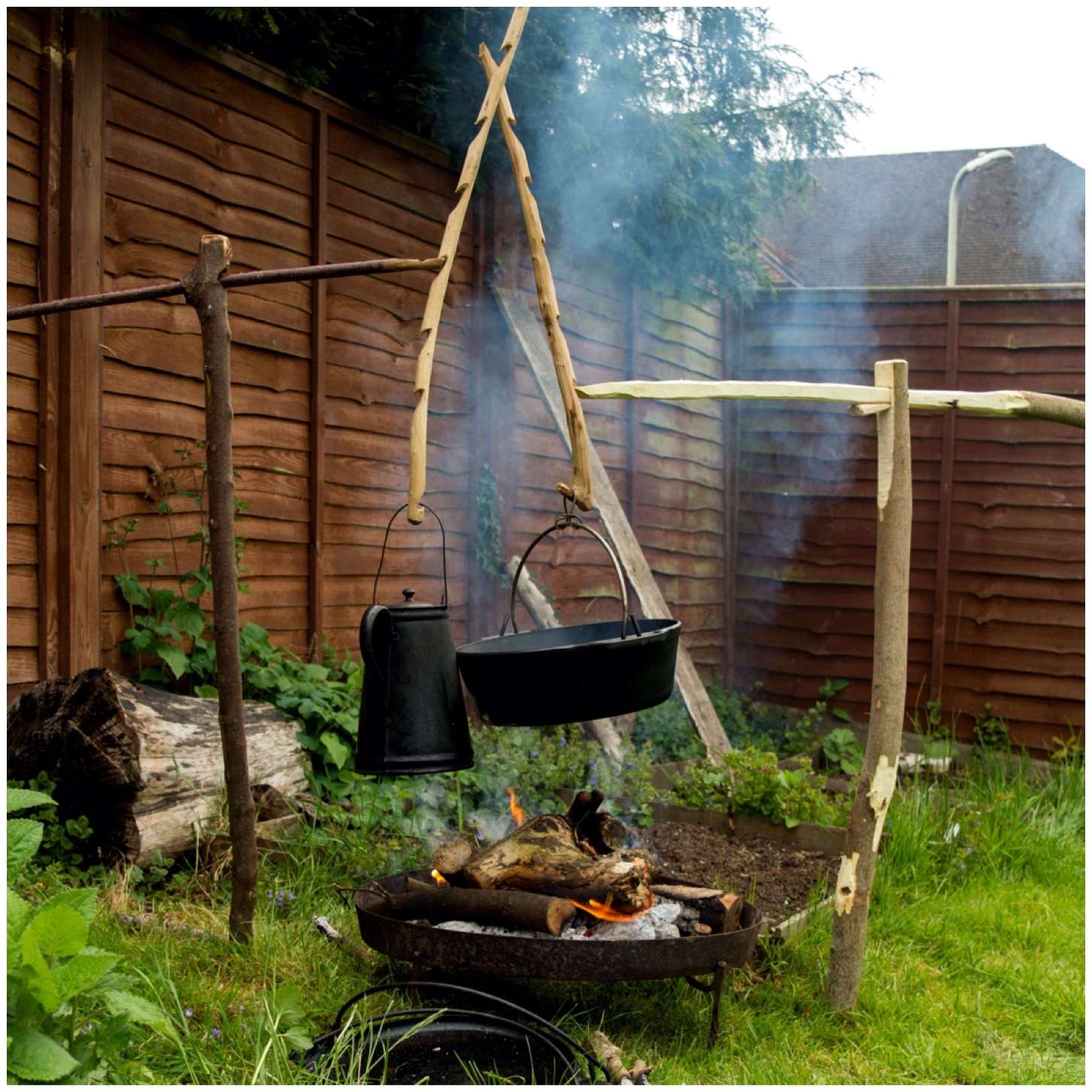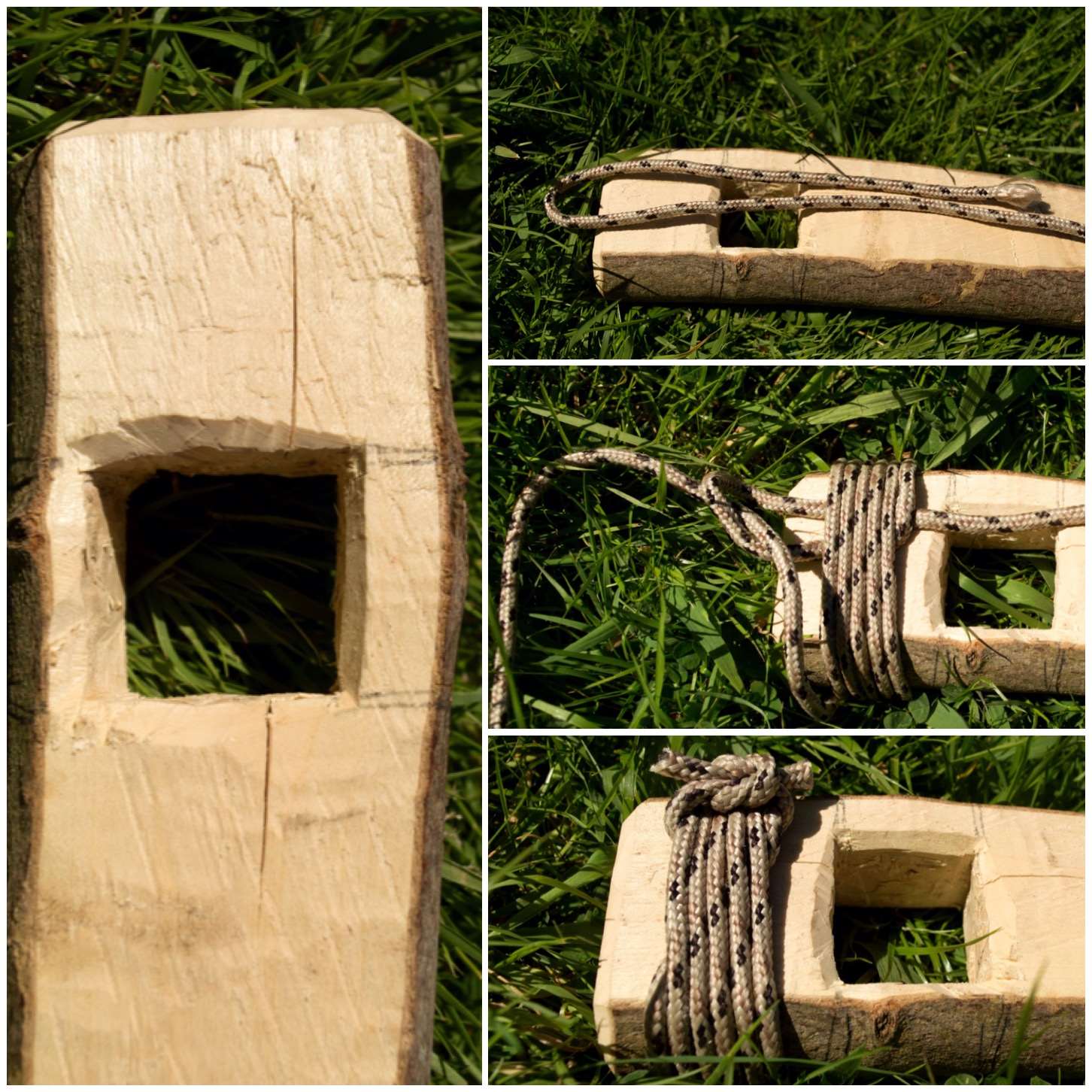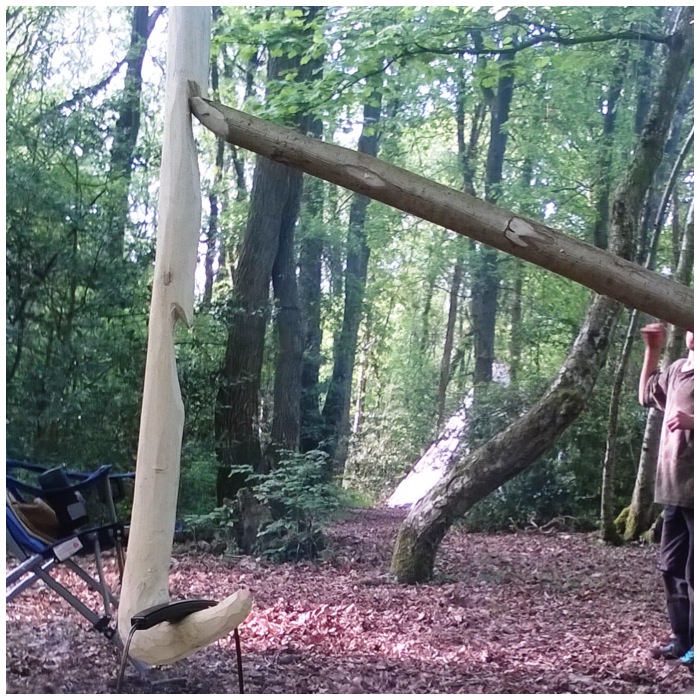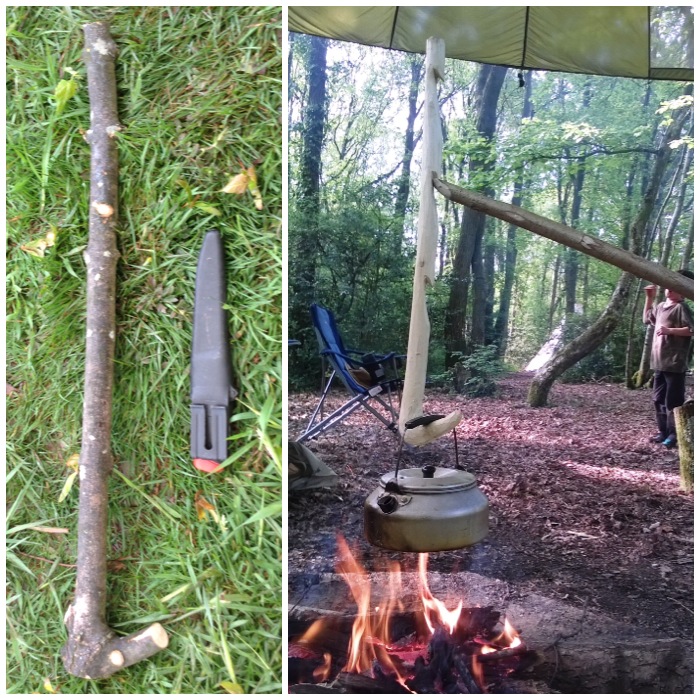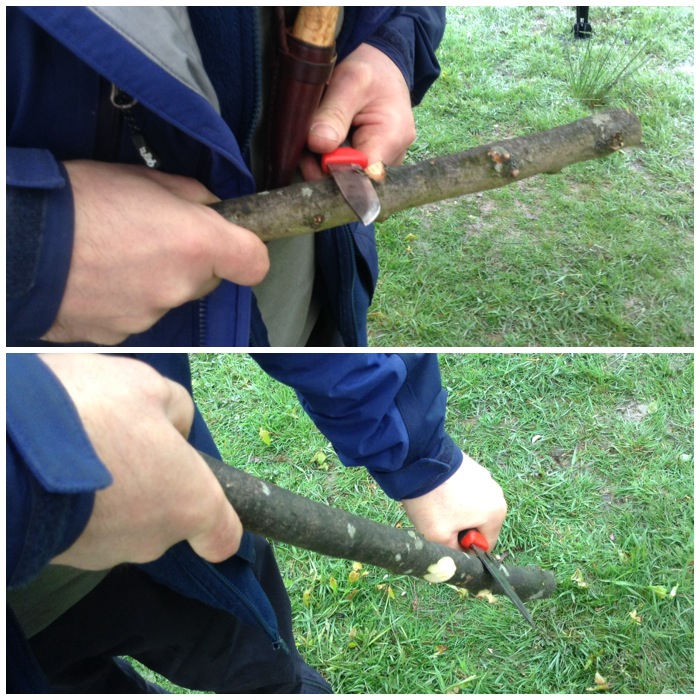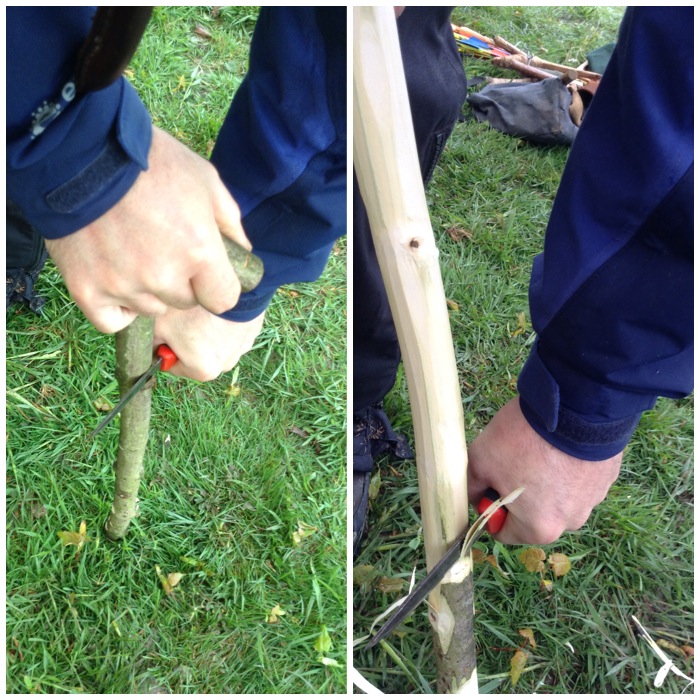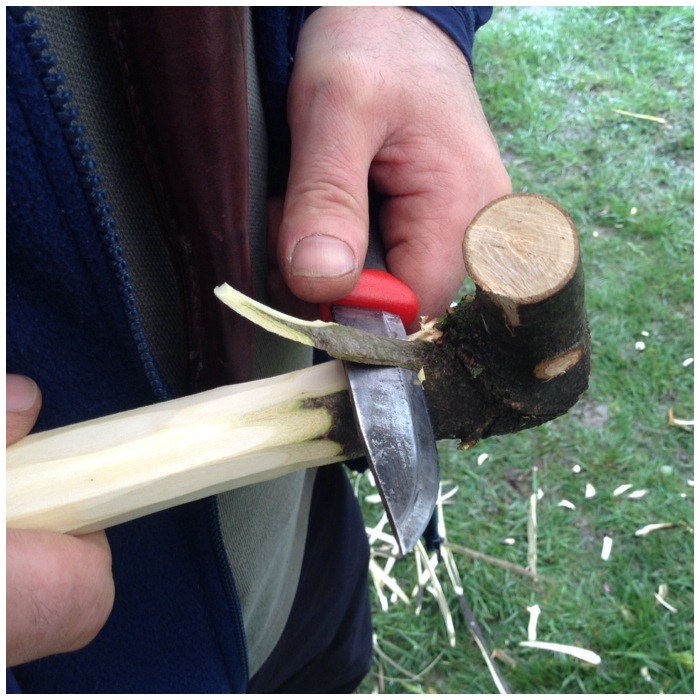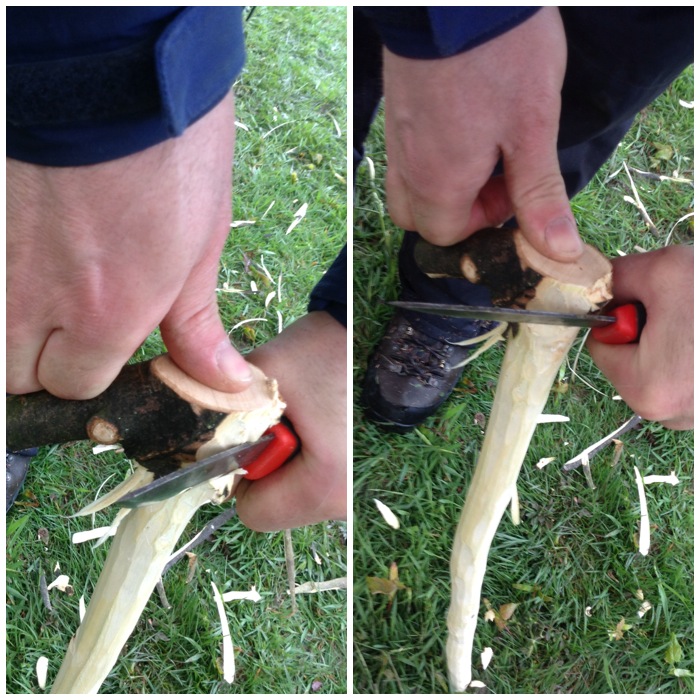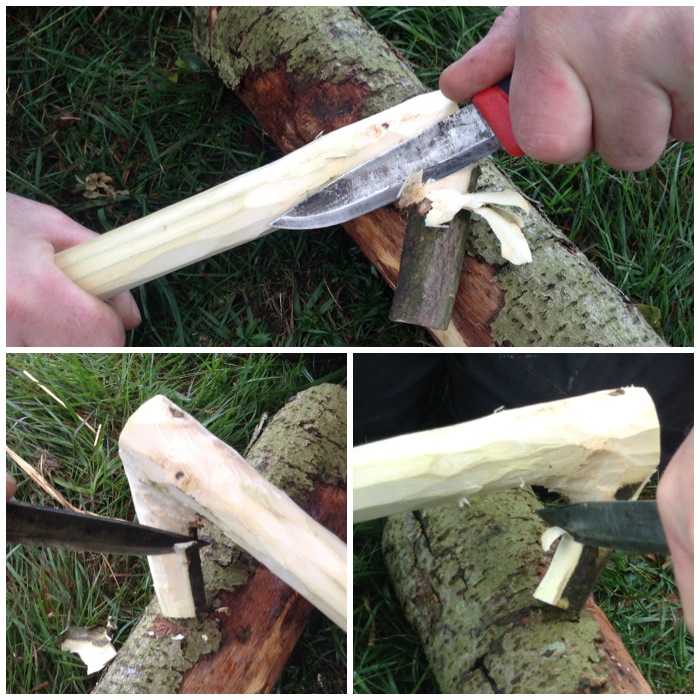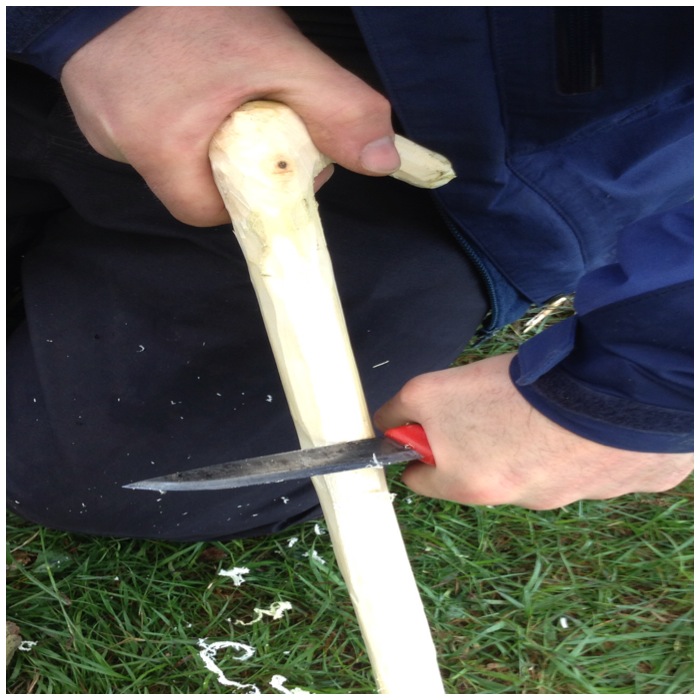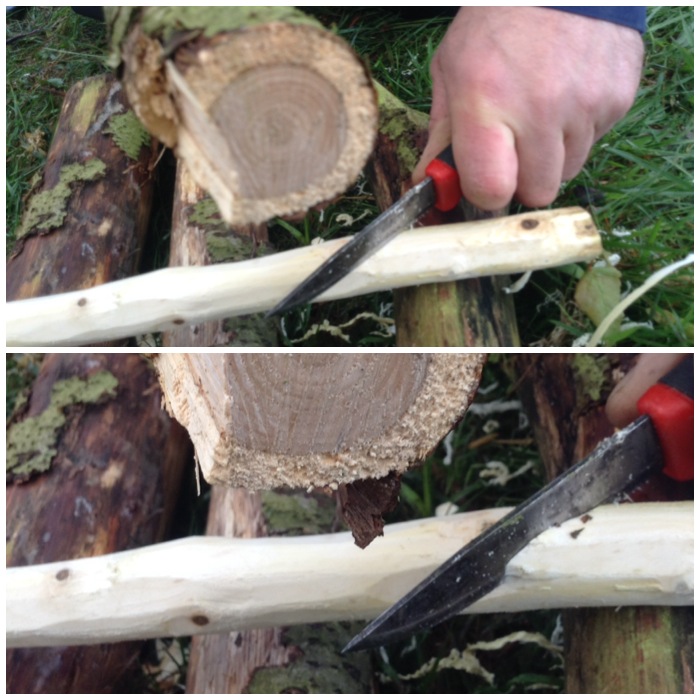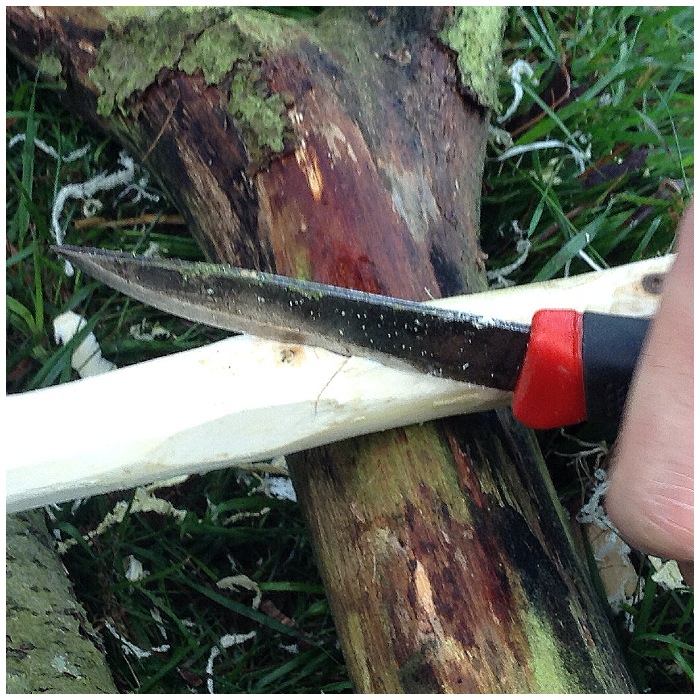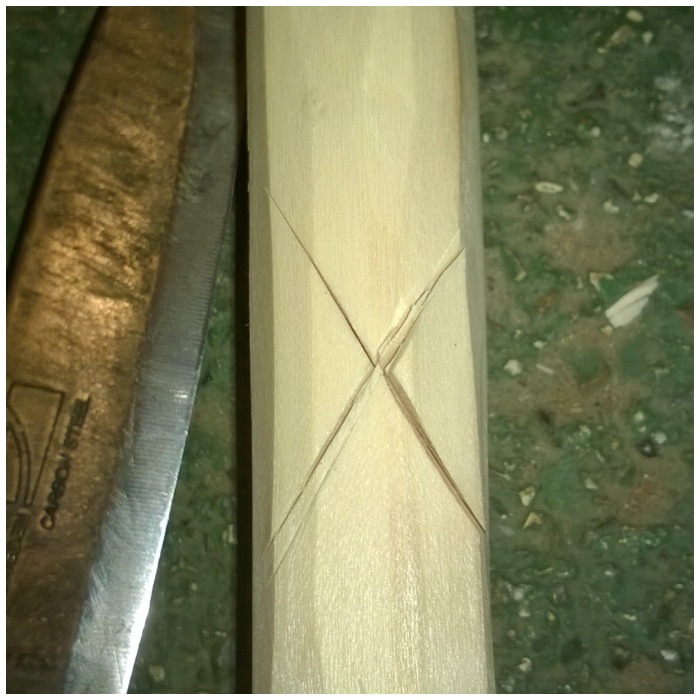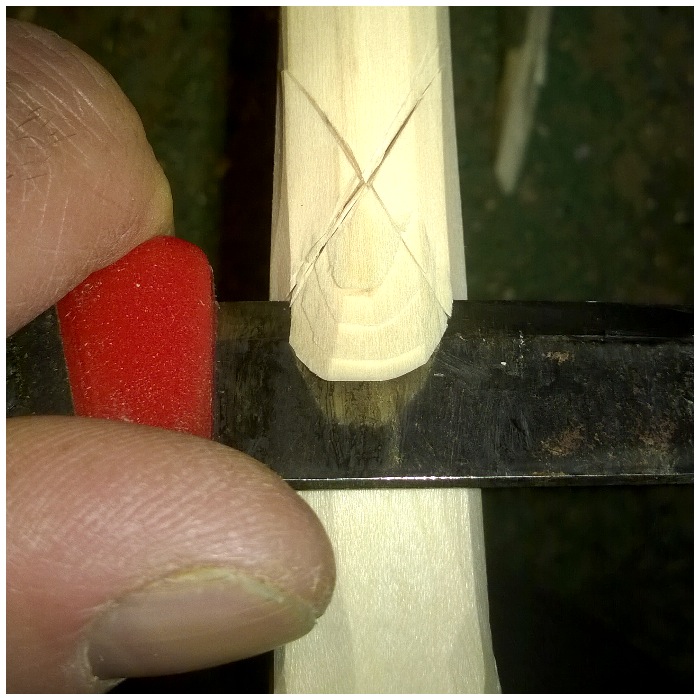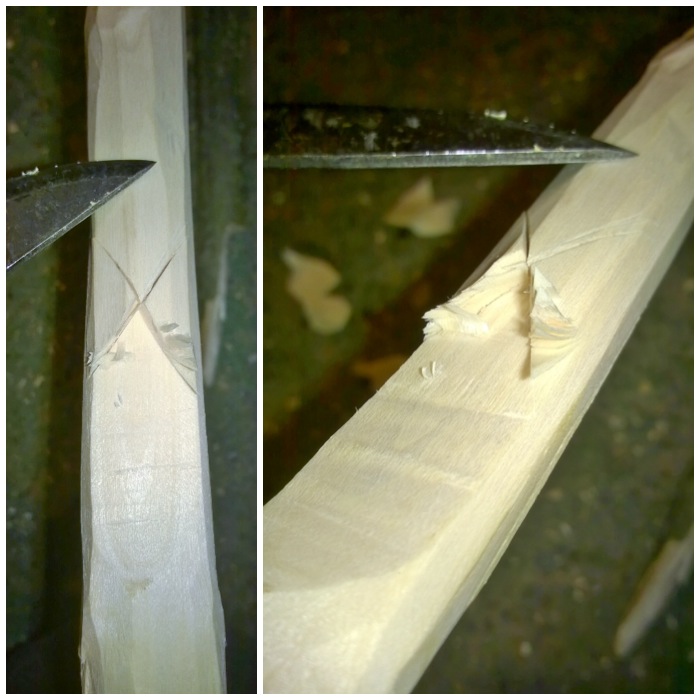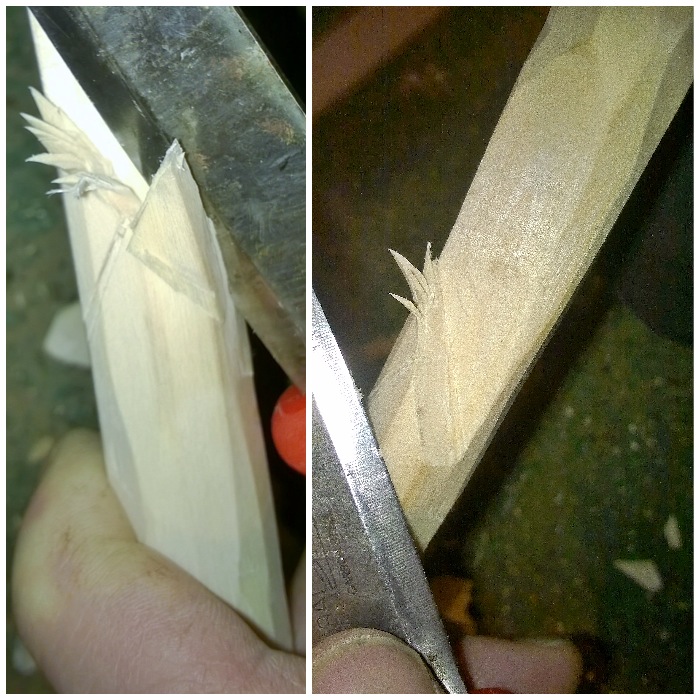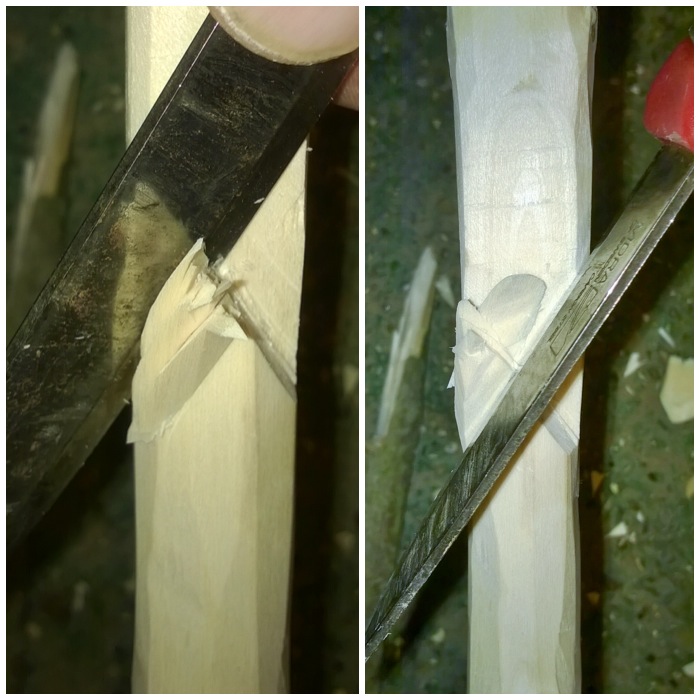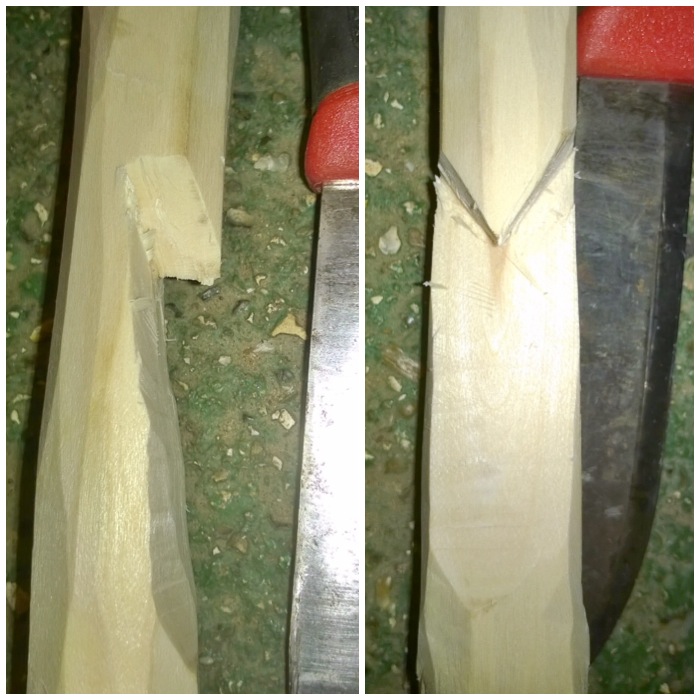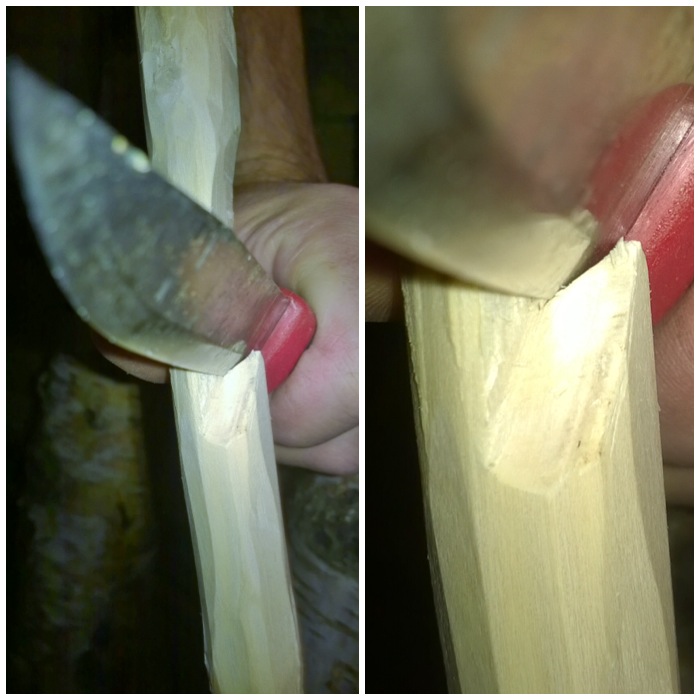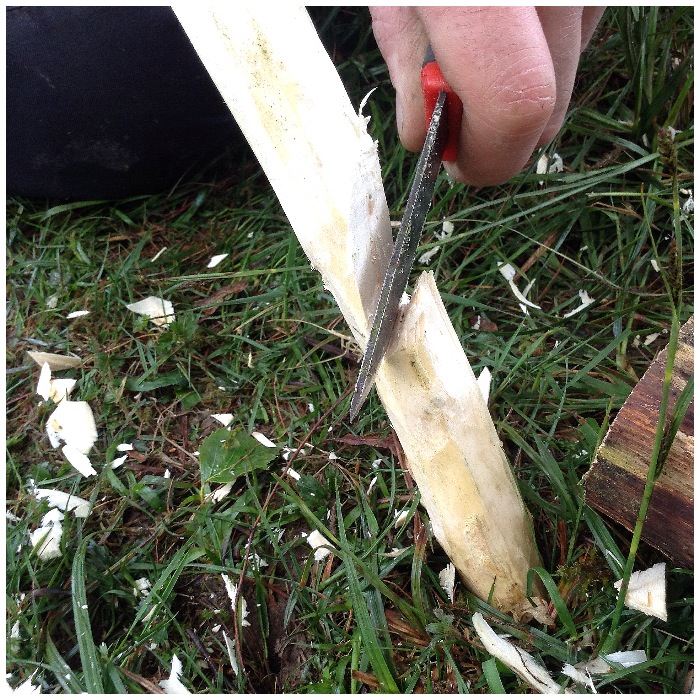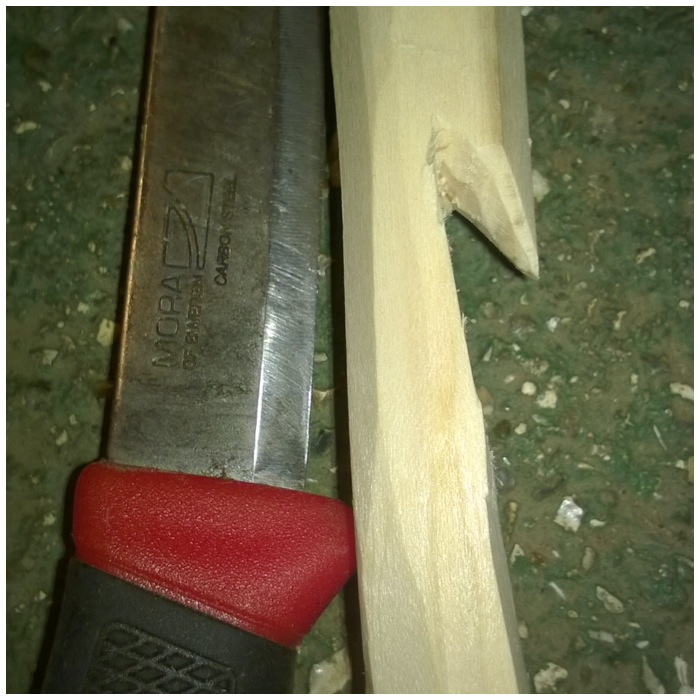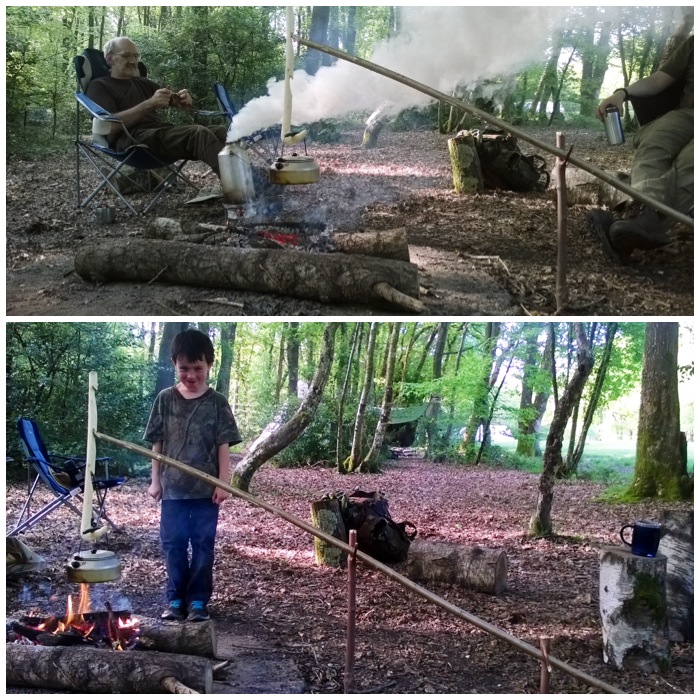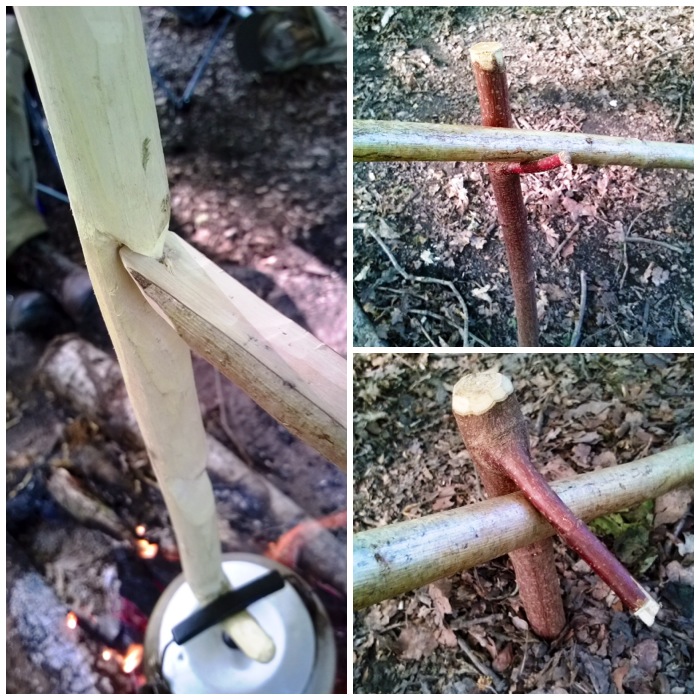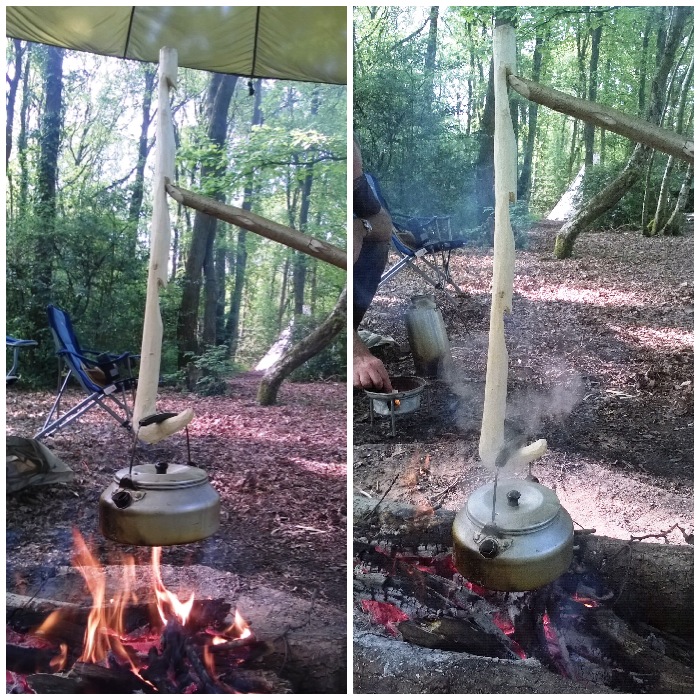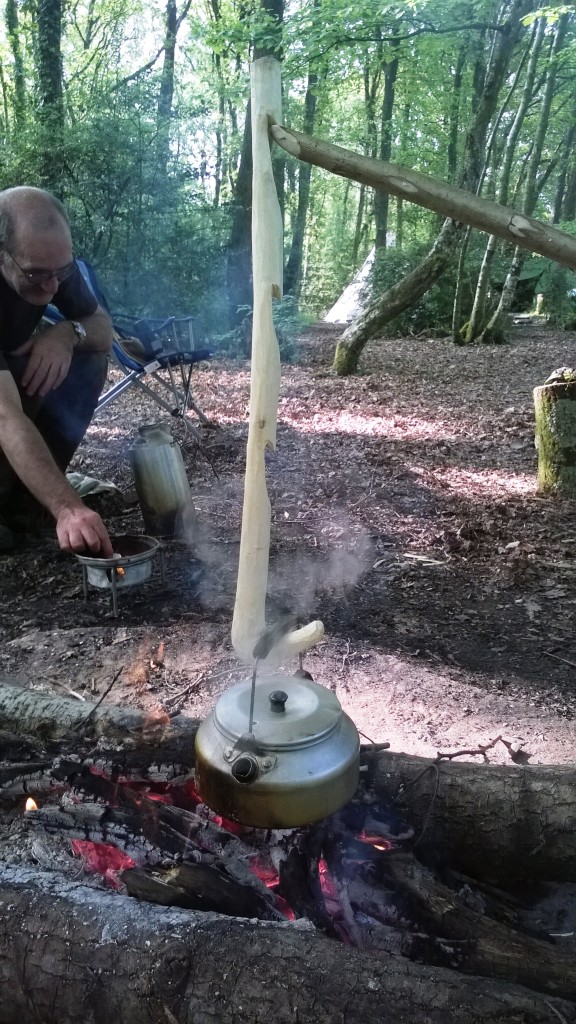The final part of the Aures Crane Trilogy – The Classic.
I call this one the Classic as it is the design laid out in the book Camp-Lore and Woodcraft. The author Daniel Beard called it a rustic crane fashioned along similar lines as the iron cranes found commonly over 100 years ago over open fireplaces.
The crane is named after Victor Aures, a Scout Master from Buffalo, NY. I found a good article on this from an issue of the Boy’s Life from 1915.

You do not see the classic crane often since it requires a specific configuration of angles on the forks and it’s all too easy to cut through the thin layer of bark and sap wood needed to form the loop on one end.
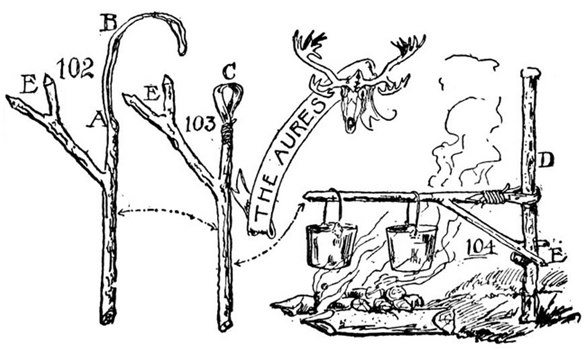
Measuring
I stumbled upon a good piece of hazel recently with a strong main fork and the necessary secondary fork at right angles to the main one.

I had a good pole that I was going to use as the upright and measured the top limb for trimming. I estimated with my eye the amount of wood I would need on the top limb to form the loop (I call this section the tail before it is formed into a loop).

Trimming
After sawing off the excess I started the slow process of removing all the excess wood on the tail. It is easy to remove the wood at first but try and remove it evenly as you work.

I tend to work from the end of the tail and work up the crane towards the fork. This helps in reducing the chance of chunking through the wood and destroying the crane.
In the pictures below I have worked my way down to the pith and then just passed it. I forced myself at this stage to take my time and work methodically.

Eventually I could make the wood bend slightly (it was only a couple of centimetres wide now). I scared myself when the bark cracked but that is OK – it is the sapwood that needs to bend.
When bending down the wood do it slowly and do not try and force it.

I finally had just a thin piece of sap wood left that could be bent a bit more but not fully. To help this process along I used the tip area of my knife to cut out some more of the wood without making it any thinner than a couple of centimetres.
To help the bending process I left the crane in a stream to soak up some water. If you have the tools to steam bend wood the job would be much easier.

Once the tail was very pliable I flattened an area where the tail would be whipped to the crane then marked the tail and the main body of the crane with a pencil so that I retained the size of loop I wanted while I whipped it.

Whipping
In the book Camp-Lore and Woodcraft, Beard’s drawing shows the tail being tied off with strips of bark. I will use bark when the crane has fully seasoned (it will shrink in the process) but for now I whipped it with some old paracord. I whipped it twice with different cord as that is what I had to hand.

The loop should be big enough for your upright and positioned so that when the crane is hung on it and braced on the fork, the pot arm is level and pointing slightly upwards.

The Pot Arm
I then went to work on the pot arm, carving out little notches so that I could adjust the position of the pot easily along its length.
I also put my usual dimple on the end for hanging another adjustable pot hanger off it.

I took the crane out on a Bushcraft course with the Royal Marine’s Cadets and it was soon in action.

It is very easy to move the crane up and down with light pots (I advise removing heavy a pot from the crane before adjusting the height then replacing it).
The crane also swings easily away from the fire. If you do not trust the loop to hold a heavy pot, you can back it up with a loop of cord.

The Three
I really enjoyed making these three Aures Cranes and hope to see a few more over fires at Bushcraft meets in the future.

The other two cranes can be viewed here:
How To…. Build a Carve an Aures Campfire Crane – Single Fork
How To…. Build a Gibbet Aures Campfire Crane
That is it for me on the Aures Crane (I am sure you can come up with some more variations on this), however in the course of my research I discovered a Single Pole Crane – that is next on the list.
Cheers
George
